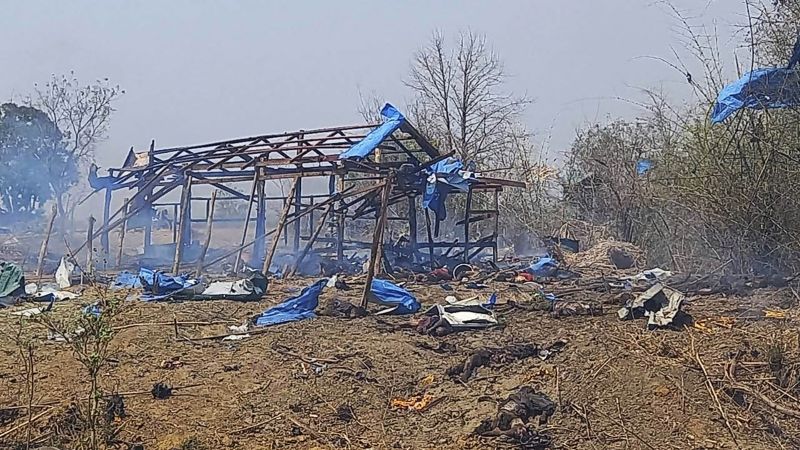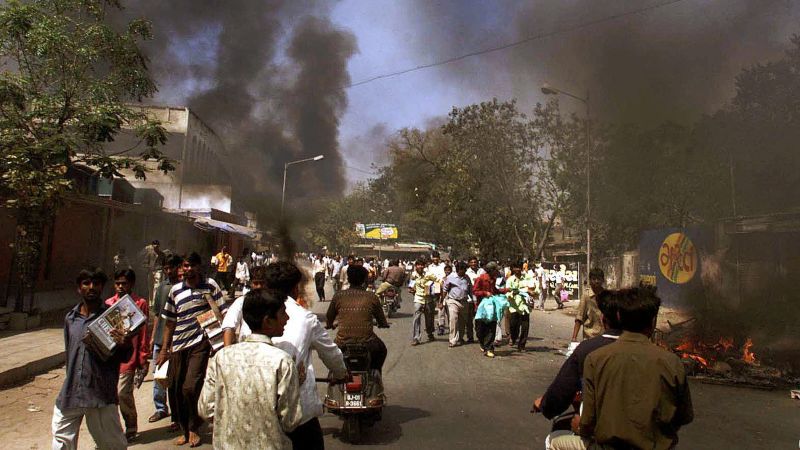Myanmar airstrike survivors ask what will it take for the world to act: ‘How many more children have to die?’

Editor’s Note: Graphic warning: This story contains details that some readers may find disturbing
CNN
—
When its helicopter gunships and fighter jets rained fire and bombs on a village celebration last Tuesday, Myanmar’s military junta insisted it was targeting “terrorists.”
But among those killed that day – in what was the deadliest attack by junta forces on civilians since it seized power two years ago – were dozens of women and children, the youngest just six months old.
CNN spoke with half a dozen eyewitnesses and survivors who said those targeted in Pazigyi Village, part of a self-governed district in the central Sagaing region, were unarmed civilians enjoying a community celebration.
The April 11 attack killed 186 villagers, among them 40 under the age of 18, according to Aung Myo Min, human rights minister for the National Unity Government (NUG), Myanmar’s shadow administration of ousted lawmakers.
Families had come from surrounding villages to Pazigyi to enjoy breakfast at the event, a social gathering for the opening of a public administration hall. About 300 people had gathered, one eyewitness said. Children were eating rice and playing. People were drinking tea and chatting.
The carnage began at 7:45 a.m. when junta fighter jets dropped two bombs on the crowd.
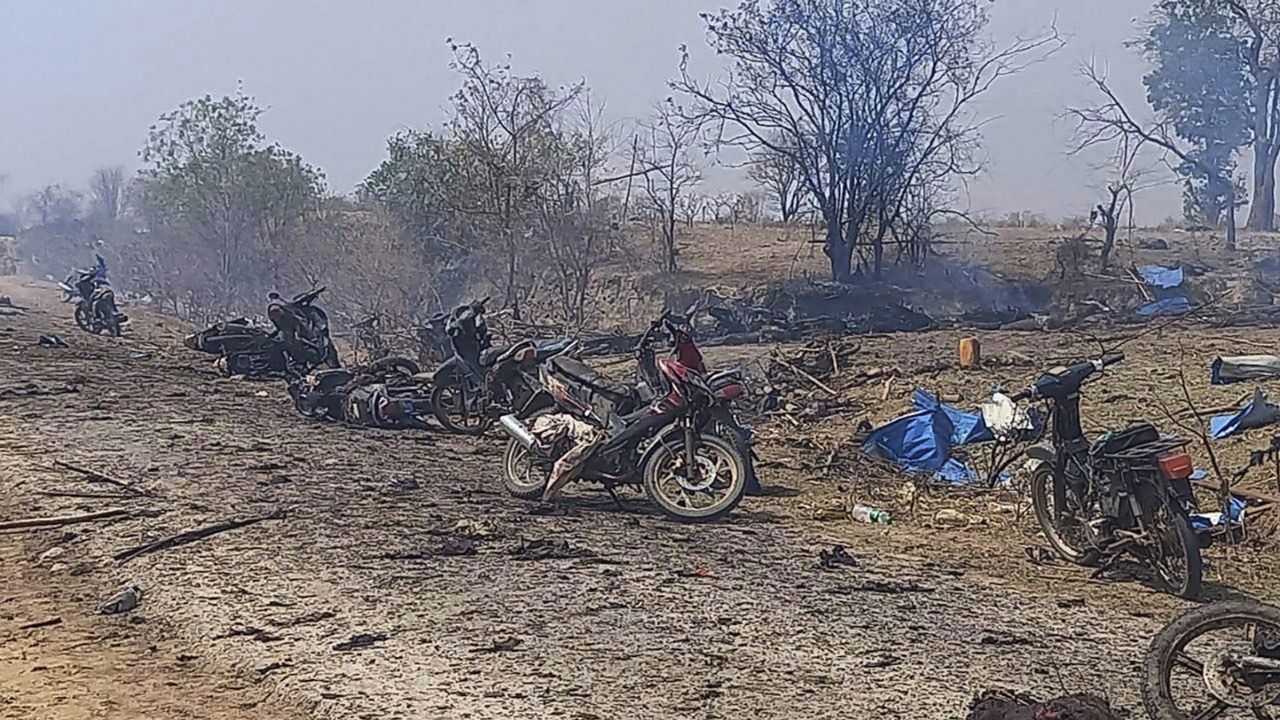
An Mi35 helicopter then circled for 15 minutes, opening fire on the injured and those trying to help them, multiple survivors and activist groups on the ground told CNN.
Just before sunset, a military helicopter returned, firing at those who had come to cremate the dead, witnesses said.
“We heard a boom. I hit the ground, holding my chest and there was a huge cloud of smoke… I got up and realized my daughter was missing,” said a father who survived the attack.
As the wounded screamed for help, he frantically searched among the dead and injured for his 3-year-old daughter and his parents. He wished to remain anonymous as he fears reprisals from the junta.
Minutes later, the military helicopter circling overheard began shooting, firing at anyone who moved.
“It was a killing field. There were people scattered everywhere,” he said, struggling to speak. “A woman with burst intestines, she died in front of me. I was shaking and frightened … why would they kill their own civilians?”
“The smell from that incident stung, and the stench hangs in my clothes,” he said.
Though he was injured in the blast, the father continued to search through the piles of bodies and debris for his family. Several hours later he found them.
“My father was cut in half from his waist … my mum’s body was unrecognizable … my daughter was headless,” he said.
He lost seven family members in the attack.
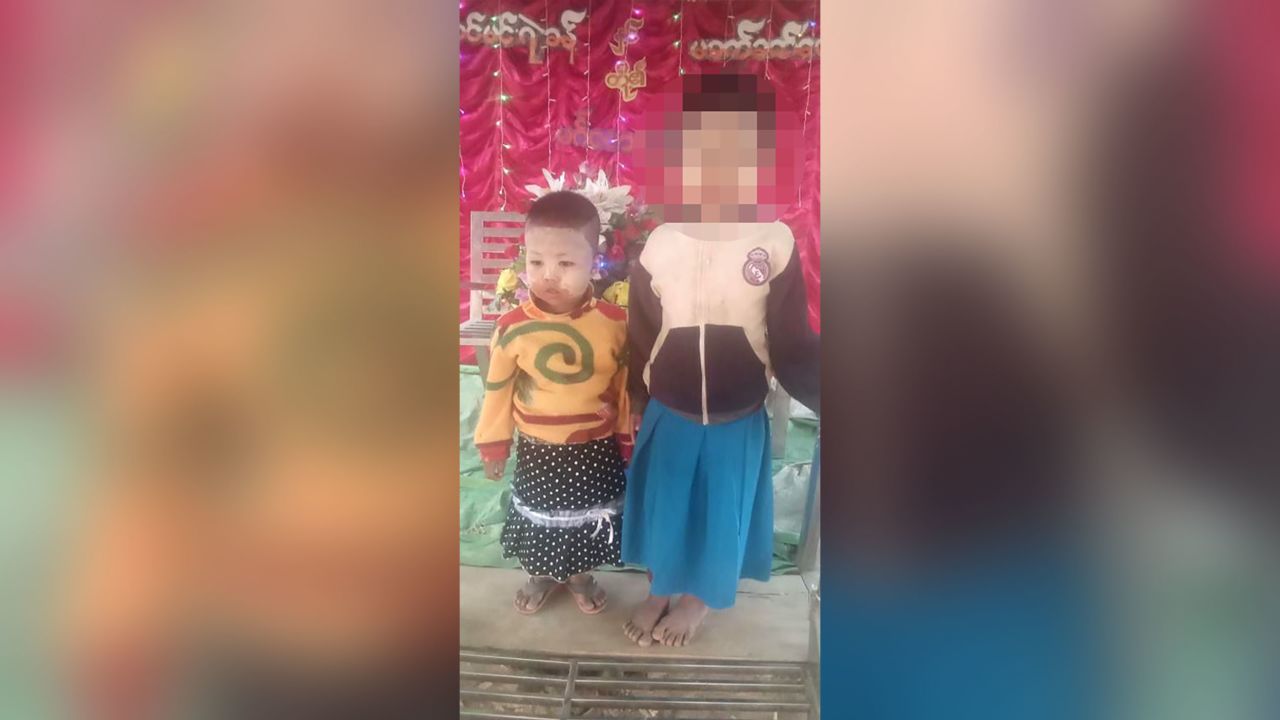
Devastated, he told CNN his 3-year-old daughter was a “clever” girl, with a “round, full face” and who was a “good talker.”
One of the last memories he has of his daughter is helping her to apply thanakha – a paste worn by Burmese women and girls to protect their skin – to her face that morning.
“That was the last day of her being alive, was it that I helped her for the last time?” he said, breaking down in tears.
The father said he tries to console himself with the knowledge that his eldest daughter, age 7, survived. Some villagers lost whole families.
Since it overthrew the democratically elected government in February 2021, Myanmar’s junta has increasingly turned its formidable arsenal on the people the government once represented.
It has used air power to crush a resistance movement determined to remove the military from power and restore democracy. But the strikes have also targeted civilians, schools, hospitals and homes.
There were 56 air attacks by the military junta between January and March this year, according to Myanmar’s Ambassador to the United Nations Kyaw Min Tun, who represents the NUG. CNN cannot independently verify the number.
Videos and images of the aftermath in Pazigyi, shown to CNN by witnesses and a local activist group, show bodies, some burned beyond recognition or in pieces, as well as destroyed buildings, vehicles and debris. Others show the blind grief of survivors and family members, of parents screaming for their children.
Fearing further attacks, rescue workers and villagers spent days cleaning the scene, sweeping away debris and burning human flesh that littered the ground.
Some survivors fled into the forest for safety, and say they are now struggling for food and water – terrified of returning to their villages.
Another survivor who spoke to CNN on condition of anonymity for security reasons, said he lost 30 members of his extended family, the youngest was just two years old, the oldest 70.
He was helping to cook at the event and said he survived by jumping into a ditch.
“My niece was crying and hugging me, ‘uncle help me,’ she said,” he recalled, visibly distressed.
“There were students, pregnant women, the elderly. What threat do they pose? This military are not human. They are more savage than animals.”
Those who survived are now left to come to terms with the horror they lived through.
“How many children have to die before world leaders take action?” asked another survivor, who said his 1-year-old niece and 3-year-old nephew were killed in the attack.
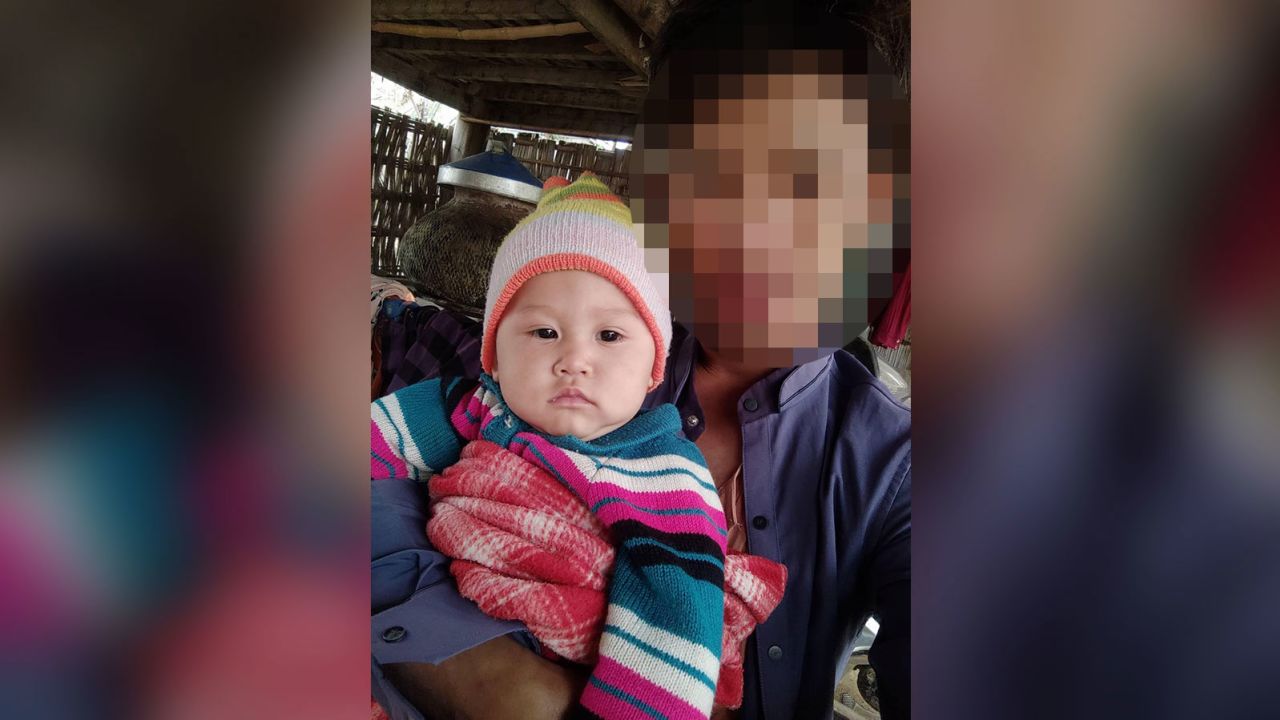
Myanmar’s military has waged decades-long wars with multiple ethnic armed groups. Human rights abuses against civilian populations in the country, particularly in the ethnic states, have been well documented.
But there has been an increase in the military’s firepower since the coup, with almost daily attacks across the country, according to local monitoring groups.
A 2022 report by the UN Special Rapporteur on Human Rights in Myanmar said member states, including Russia and China, had been supplying the junta with weapons since the coup – equipment that could have been used to attack civilians. They include fighter jets, armored vehicles and air defense systems, according to the report.
The day before the Sagaing strike, the military bombed a school and a church in neighboring Chin state, said local resistance fighters and Myanmar’s National Unity Government. Nine people were killed in the attack in Falam township, including the school’s principal, his wife and their son.
CNN could not reach the military for comment on the Chin attack, but it has previously denied targeting civilians, despite a growing body of evidence.
In March, at least 22 people, including three monks, were killed at a monastery in southern Shan state.
The military said the civilians were caught up in gunfire and killed by resistance fighters, while the Karenni Nationalities Defense Force (KNDF) denied they were in the area and blamed junta soldiers.
The coroner who carried out the post-mortems told CNN the victims showed signs of torture and were shot multiple times, indicating they were intentionally killed.
The villagers CNN spoke to in Pazigyi said they do not know why the junta targeted their village.
Many areas in Sagaing region are resistance strongholds that are not under the control of the military, which considers all resistance fighters belonging to the People’s Defense Forces and the NUG to be terrorists.
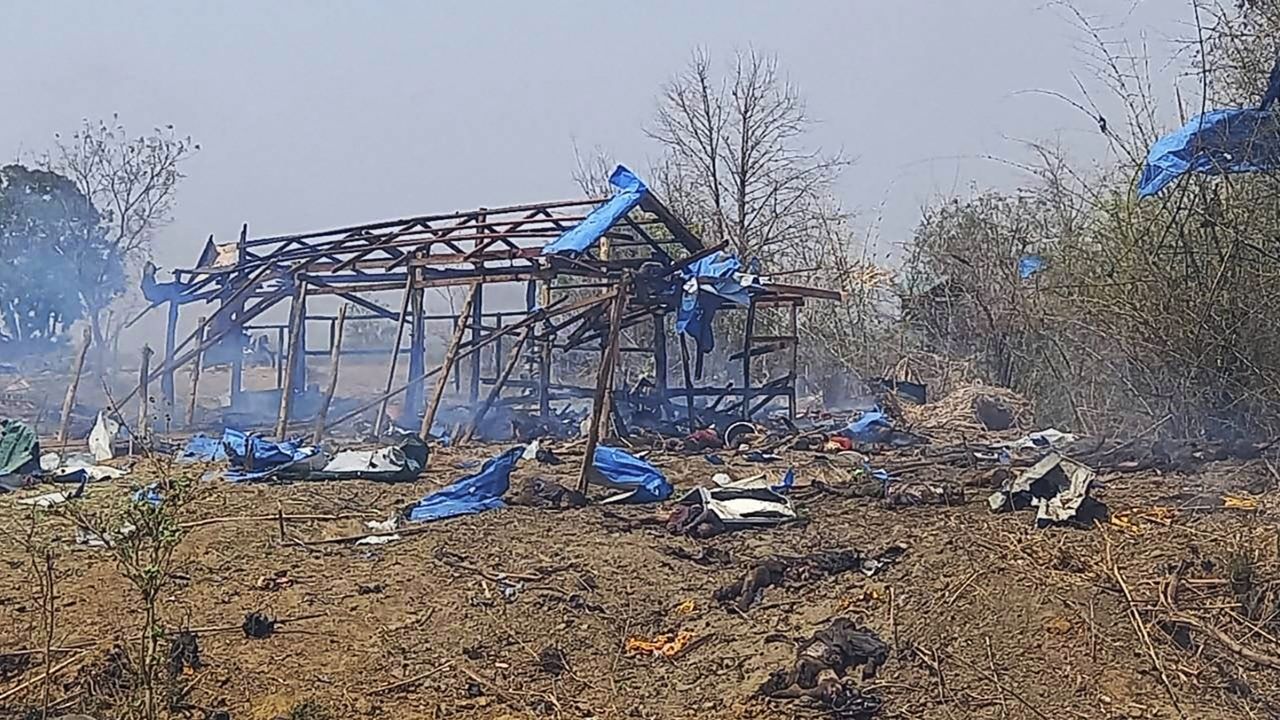
Military spokesperson Maj Gen Zaw Min Tun said the strike on Pazigyi targeted “terrorists.” The military also claimed that gunpowder and explosives at the site led to a “large explosion,” causing the deaths.
It alleged the resistance fighters planted mines near the scene of the attack, which – along with explosives and gunpowder they were allegedly storing – led to an explosion. The junta also said innocent civilians may have been forced to help the “terrorists.”
Dr. Derrick Pounder, an independent forensic pathologist who reviewed footage and photos from the attack, said the area and type of shrapnel injuries on the bodies suggest an “air-launched” weapon, not a landmine caused the blast.
“The area covered by the blast, the character of the shrapnel injuries and the large fragments of apparent shrapnel seen, strongly support the allegation of an air-launched weapon and are difficult if not impossible to reconcile with the allegation of a landmine or series of landmines,” he said.
Some severely damaged bodies he reviewed, “have flash burns with loss of clothing from blast effects and many show shrapnel injury and mutilations.”
“Some mutilations are extreme with dismemberment and disemboweling. Large metal fragments, possibly from the casing of an explosive device, are associated with some bodies,” he added.
The latest massacre sparked international outcry. In separate statements, the UK and US ambassadors to the UN condemned the airstrike and called on the regime to cease its violence.
UN representative Kyaw Min Tun said the “heinous crimes of the military junta clearly constitute war crimes and crimes against humanity.”
“These attacks showcase the junta’s escalating terror campaign against the Myanmar people,” he added.
To stop the junta getting its jets off the ground, there are growing calls for tangible action from the international community, including a ban on aviation fuel imports as well as a comprehensive arms embargo.
“Anything we can do to make it more difficult, more expensive for them to put these gunships in the air to kill people, to get their hands on weapons, to get their hands on technology that’s being used as weapons,” said UN Special Rapporteur Tom Andrews. “Anything that the world can do to stop these materials getting into the hands of the junta, that can save lives.”
Andrews said the international community’s response to Myanmar had been neither focused nor strategic, unlike the “coordinated” approach seen with Russia’s invasion of Ukraine.
The survivors who lost families in last Tuesday’s attack ask how many more people have to die before such action is taken.
“We want you to give us practical help. How many of us will have to die? How long do we have to suffer?” said the relative from Sagaing, who lost many family members in the strike.
“Please don’t abandon us,” he pleaded.


